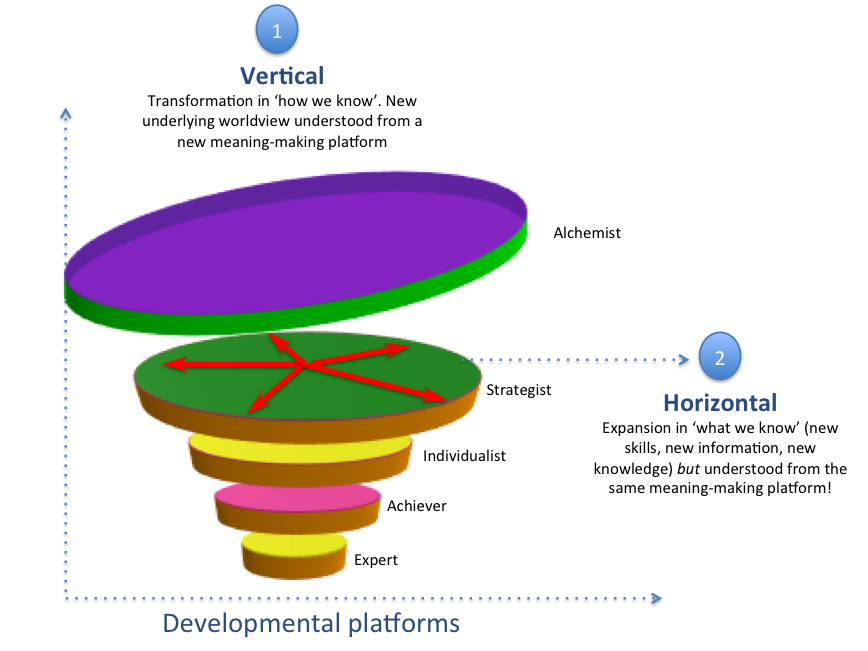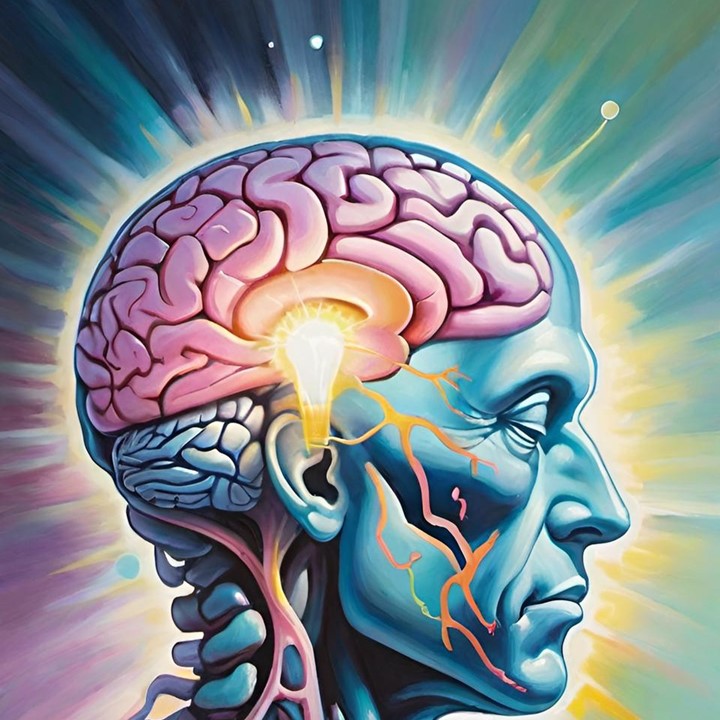How Much Could You Grow?
“It looks as if there were a single ultimate goal for mankind, a far goal toward which all persons strive. This is called variously by different authors self-actualization, self-realization, integration, psychological health, individuation, autonomy, creativity, productivity, but they all agree that this amounts to realizing the potentialities of the person, that is to say, becoming fully human, everything that person can be.”
― Abraham Maslow
1. The Stages of Adult Development
Over the past seventy years, developmental psychologists have uncovered a profound truth: human consciousness does not just change in content – it evolves in structure. As people mature, they move through recognizable stages, each one offering a wider, more integrated view of the world as well as new kinds of perspective-taking ability. This is known as vertical development. These stages of adult development offer different thinking styles, new ways of solving problems, and more sophisticated ways of relating to other people.

Unfortunately, it was also discovered that most people in Western society are operating far below their full potential. Many people are stuck on the lower stages of development because of poor-quality education, trauma, and a lack of access to the right resources.
Additionally, the coaches that do offer developmental resources are prohibitively expensive. It is typically the case that higher-paid executives are the only ones able to access this kind of training, while the "average person" is left behind.
2. The Secrets of Accelerated Development
Most education today is focused on "horizontal development" – new information and skills. If you were to think about your brain like a computer, this would be like downloading some data from the internet and storing it in your memory banks.
On the other hand, developing along the “vertical” axis is like upgrading your brain’s operating system. Your entire way of processing information changes, as well as many of the “programs” you might use to solve problems at work and in life. This kind of development is difficult to create in a school environment, because it requires some specific things to happen:
- First, someone must have a “disorienting dilemma” – a problem that they cannot solve at their current level of development. Perhaps someone at the “expert” level gets promoted to manager and has to start acting like more of an “achiever” or “pluralist”.
- Second, they need to be exposed to new information that offers some missing puzzle pieces to their problem. This could be in the form of books, articles, podcasts, and other media that is rich in high-quality information. This new information may also come in the form of support from colleagues and friends.
- Third, they must have access to someone with a new perspective that they need to get to the next level of development. For many people, this can be a coach, therapist, or mentor, and sometimes a trusted family member like a grandparent or a community figure such as an elder or religious leader. This person offers both affirmation and gentle challenges to support growth.
Aside from school systems being ineffective, one of the main reasons that many people are not at a higher stage of development is because they lacked (or lack) access to resources like mentors, coaches, and good book recommendations. These kinds of things are what help people develop new perspectives from their “heat experiences” and grow vertically.
So how can this be made easy and accessible, especially in the 2020s economy?
3. How to Get Started Today
Since 2014, I’ve been prototyping, managing, and launching scalable development opportunities that are based on the best research available, as well as conducting some research of my own to link vertical development with fields like expert performance, wisdom, and neuroscience.
Part of my life's work has been to make developmental resources accessible to people who may not be able to otherwise afford them. This includes cost-effective assessment alternatives, as well as guided journaling resources and AI-driven coaching:

WUSCT-Abridged
The WUSCT-Abridged is a streamlined version of Jane Loevinger’s original sentence completion test, adapted for use in small businesses or individual coaching. It offers a low-cost, high-impact alternative grounded in rigorous developmental psychology.

Discovering Your True Self
Studies have shown that guided journals offer many of the same benefits as coaching and therapy. Spending time writing about yourself will make you happier, healthier, more productive, and more able to tackle life’s challenges. Discovering Your True Self was developed to help you connect to your truest, most authentic self.

Noustheios (Custom GPT)
Noustheios is a Custom GPT designed to help you develop inner peace, wisdom, and deeper spiritual awareness. It uses a combination of coaching best practices and spiritual principles to provide guidance, insights, and questions that help you grow from the inside out.
4. Becoming Superhuman Too?
One of the founders of media theory, Marshall McLuhan, observed that media and technology functions as an extension of the human body and mind. Cuneiform writing, for example, gave the ancient Mesopotamians the ability to remember details of transactions and taxation, setting the psycho-material foundation for the age of empires.
“All media are extensions of some human faculty- psychic or physical... With the arrival of electric technology, man has extended, or set outside himself, a live model of the central nervous system itself.” ― Marshall McLuhan
Today's technologies are no less significant than early innovations like writing. In particular, the phenomenon of humans working together with artificial intelligences is something I call a "tandem intelligence" – a pair of intelligences working together to accomplish a common goal that each would struggle to complete alone. In a world of artificial intelligence and other digital tools, our “human” capabilities are now only limited by our imagination and our ability to interface with machines.
But, if things like coding and graphic design are so easy now, where do humans fit in? I discuss this in my free guidebook Tandem Intelligences, which also shows you how to use some of the newest AI tools available.